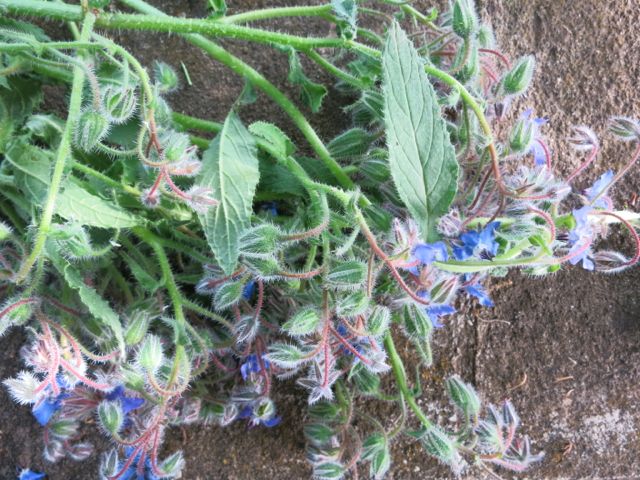
I want to admit something that might appear to be somewhat controversial on a blog that prides itself on talking about Italian food.
I do not make pasta.
I’m not talking about cooking pasta dishes, which I do all the time. I’m talking about taking flour and eggs, mixing them together, and turning them into miraculously thin fettucine, plump ravioli or tiny tortellini.
Yes, I’ve ventured into gnudi, gnocchi and other easy to form pasta. But the egg pasta that involves either rolling out a sheet or pushing it through some kind of machine? Almost never.
I say almost never, because I have a vague recollection of having made fettucine one weekend while we were out in Todi. About 15 years ago. That vague memory of it being hard, messy and frustrating was I guess what has kept my pasta machine on the top shelf of the pantry for more than a decade.
But a few weekends ago, I’m not sure what got into me, but I decided to give it another go. My friend Gillian was coming up to Todi for the weekend, and I knew we were going to have one day of sun, and one of rain. So the rainy day project would be making pasta.
On the drive up to Todi we stopped gossiping long enough to stop by the mozzarella store in Orte. Besides the usual, we picked up some cute little goat cheeses which inspired me to make the brave decision of not just making fettucine, but attempting goat cheese ravioli.
So our rainy day project was taken care of. But how best to take advantage of the gorgeous sunny day? Foraging of course. I had some vague idea of gathering nettles, which I figured we could find at some point in our walk. I mean, I’m always running into (and carefully avoiding) the stinging plant, so we even brought along extra bags to act as impromptu gloves to protect us from what I imagined would be bags full of nettles.
Of course, we couldn’t find any.
But we did manage to first recognize, then gather, enough borage to fill at least two dozen as-yet-to-be-made ravioli.
Farm fresh eggs from my neighbor Marisa and we were good to go.
When it comes to all things pasta I always turn to my friend Evan Kleiman. And when she’s not around, I make do with one of her books. This time: Pasta Fresca. I have an original signed edition of course. Which is much loved, used and stained. So this is her pasta recipe below. But Evan, if you are reading this, why do you make it sound so easy? I always end up making somewhat of a mess. That lovely well of flour on the wooden board, with the eggs nestled inside, always looks so nice at the start. But things tend to fall apart quickly, with me frantically trying to keep the eggs from running not only outside of the well, but out and over the edge to the floor.
But somehow I did manage to make the pasta dough. And with Gillian’s help, we stretched it through the pasta machine (with only a few minor and totally fixable mishaps).
And miraculously everything worked out fine. The ravioli weren’t all exactly the same size or perfect, but at least none of them fell apart in the cooking water. And they were definitely delicious.
Did the deliciousness have something to do with the fact that we spent almost a day sourcing the goat cheese, ricotta and borage? Then spending three hours making the ravioli? Yes. I think the work we put into it definitely did make us enjoy it all the more.
Would I do it again? Maybe.
But I’m also thinking I just may wait until Evan comes to visit.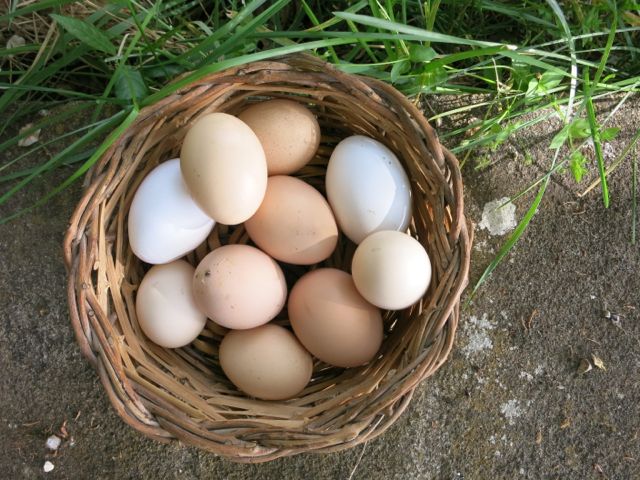
borage and goat cheese ravioli
borage and goat cheese filling:
1 cup of ricotta
1 cup of fresh goat cheese
1 big bunch of borage leaves
1/2 cup grated parmesan cheese
pinch of nutmeg
salt and pepper
1 stick butter
12 sage leaves
Cook the borage leaves in water until tender (this should take about 8 minutes)
Drain well and chop.
In a bowl mix the rest of the ingredients with the borage leaves, and season with salt and pepper
Pasta Dough (from Pasta Fresca by Evan Kleiman)
2 cups all-purpose unbleached flour
3 extra-large eggs
Make a mound of flour on a wooden or marble board. Using your fingers, hollow a wide hole out of the center of the mound so that the flour looks like the center of a volcano. Carefully break each egg separately into a cup to make sure it is fresh and good, then transfer it to the crater. Using a dinner fork with long tines, carefully beat the eggs until they are well scrambled. Keep beating the eggs and begin to slowly incorporate flour from the sides of the crater. Take care that the loose egg and flour batter in the center is kept enclosed on all sides by the mound of flour. When the egg mixture is very thick, and you can no longer mix in any more flour by beating with the fork, carefully push the remaining flour over the mixture and begin to knead it with your hands. Knead the mixture for several minutes until it absorbs as much flour as possible. After approximately 10 minutes of kneading, you should have a stiff but elastic dough. The beauty of this method is that if you have an excess of flour for the amount of egg, the extra flour will automatically fall away from the side and will not become incorporated into the dough. Before you roll the dough into pasta sheets, allow it to rest, covered with a kitchen towel, for at least 15 minutes.
To Roll Pasta Using a Pasta Machine (this is what I did)
Unwrap the ball of dough, which has rested for at least 15 minutes, and carefully cut a slice 1 inch thick and rewrap the remaining pasta. Flatten the pasta slice with the heel of your hand. If the dough feels a little tacky, lightly coat each side with flour. Open the pasta machine rollers to their widest point. Begin to feed the pasta through the rollers. Repeat at this thickness 4 or 5 times, each time folding the sheet of pasta onto itself in thirds. Then roll the sheet of pasta, passing it through each successive number until you achieve the thickness you desire. For stuffed pastas, roll the dough as thin as the machine allows.
If you use the pasta sheet, sfoglia, for stuffed pasta, use it immediately.
To assemble:
Melt a stick of butter in a small pan
Carefully lay out each strip of dough. Place a spoonful of filling along the lower half, about an inch apart. Carefully fold the dough in half, length wise, so that the long edges meet up and the filling is covered. Using your fingers, gently press the dough on either side of the cheese filling, trying to eliminate air bubbles. Using a ravioli cuter, or a knife, cut the sheet on either side of the cheese mounds, forming ravioli. Gently press the edges with your fingers or the tines of a fork.
Place the ravioli on a floured kitchen towel until ready to use.
To Cook:
Melt a stick of butter in a small pan. When hot, add sage leaves and cook for two minutes. Turn off heat.
Bring a large pot of salted water to boil. Gently drop in the ravioli, being careful not to break them. Drain, again being very careful to handle gently.
To Serve:
Place in large serving dish, or individual dishes, and pour over melted butter and top with grated parmigiano. 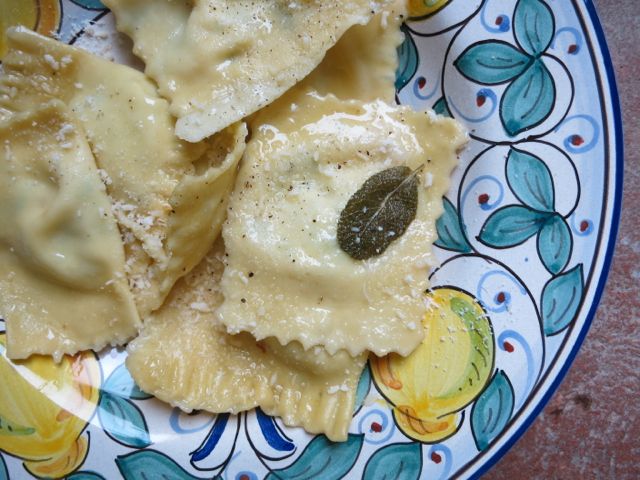
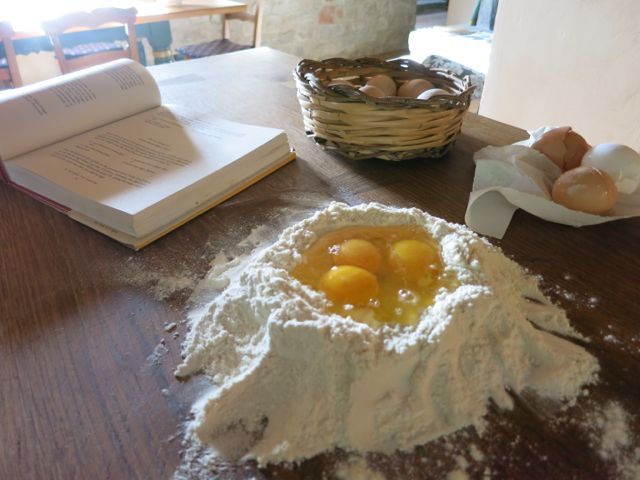
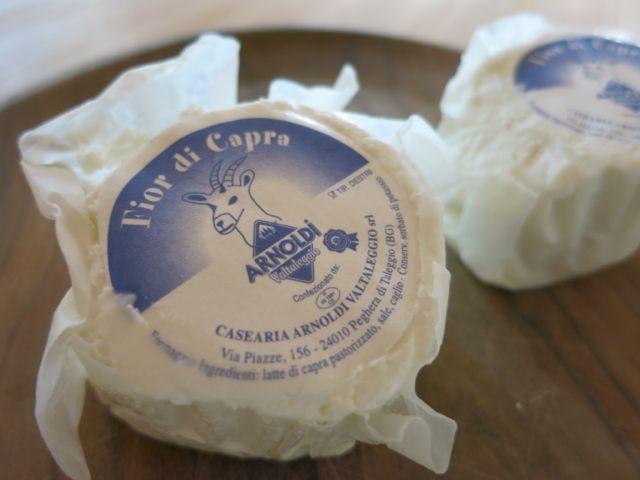
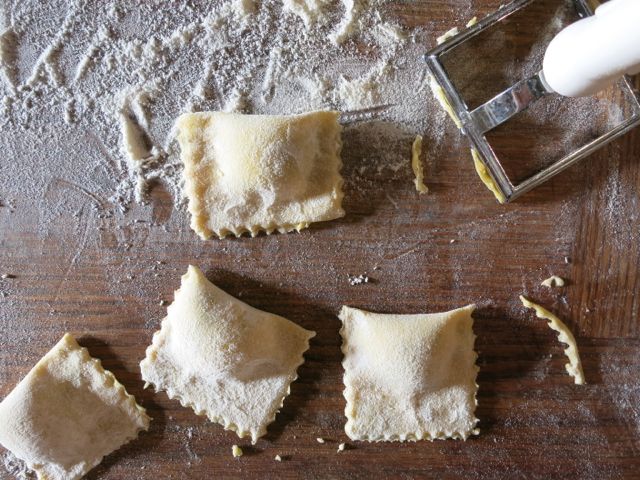
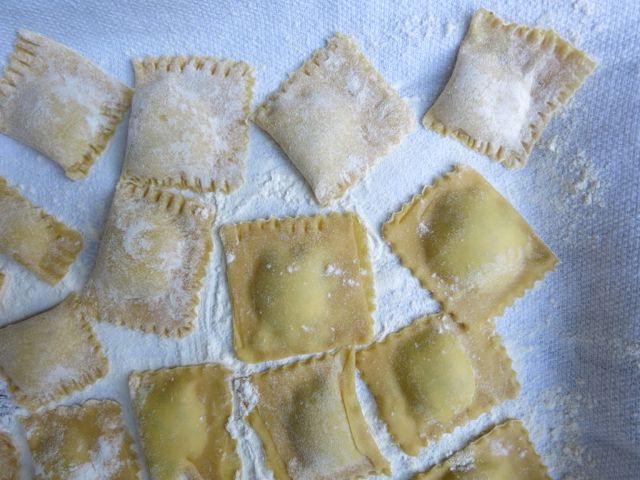
If I lived in Italy, I would never make fresh pasta either… I only do it because the fresh stuff available in France is either terrible or super expensive. Sometimes both ! And even at that, I have still never dared to make ravioli, so brave you !
They look gorgeous and I’m sure they must have been just as delicious!
Wow, if I had access to eggs that gorgeous I would make fresh pasta more often. The next time we’re together facciamo una pasta insieme. Those are fantastic looking ravioli!
Your room is ready and waiting. As is the pasta machine.
So tell me what borage compares to, taste-wise? And if I can’t find it, what would you sub out for it (I guess basil but something else creative? maybe sorrel?) thanks!
Borage has a very delicate taste, sort of cucumbery. But I have to admit that the flavor, once in the ravioli, was extremely subtle. So subtle in fact that it’s fine to use another green. Sorrel would be pretty strong tasting. The fun of using borage was mostly the fact that we gathered it ourselves. You could use swiss chard, or even spinach.
Thanks for explaining how to do this. I think it makes things a lot more interesting when people learn different pastry making skills. I don’t own one a pasta machine so I would probably have to roll the dough out with a pin and cut the strips, etc in stages.
I can see how the machine would come in handy and that would be a thoughtful gift to give anyone. Thanks for using pictures to illustrate the steps. It made it easier to understand.
Just discovered this blog, hence late response. Always thought the main point of borage was the pretty blue flower, and it grows like a weed. I don’t know what the flower tastes of (if anything), but it would certainly make the dish look amazing, as a garnish.